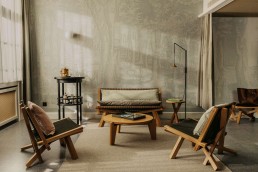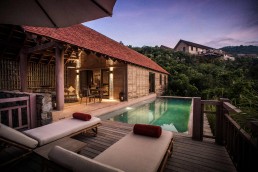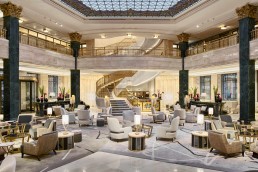THDP draws on Tuscan tradition and the qualities of water to transform a spa resort near Italy’s most famous thermal springs.
Tucked away in the unspoilt countryside of southern Tuscany, Terme di Saturnia is recognised as one of the most historic spa complexes in Italian history, with natives flocking to its natural hot springs for thousands of years. Originating from the rain that lands on the region’s Mount Amiata lava dome, the geological conformation is fuelled by a tank-shaped crater, from which clean water renewed at intervals of six hours flows with a constant temperature of 37.5 degrees. As the water descends down the valley towards the picturesque Le Cascate del Mulino falls, it cools and the sulphur within it crystalises, making the pools brighter with an almost celestial appearance.
The natural phenomenon has maintained its allure to this day, so much so that a luxury resort was built nearby in 1919, allowing travellers to stay the night after bathing in its therapeutic waters. Now, the resort has been given a new lease of life by London-based architecture and interior design studio THDP, whose renovation looks to the future while paying homage to Saturnia’s storied past.
“The brief was to achieve a visible and perceived renewal with a stronger identity and international Leading Hotels of the World (LHW) standard while retaining the internal architecture and maintaining the high-quality furnishings of late designer Lorenzo Bellini’s original scheme,” says Italian architect Manuela Mannino, who founded THDP with her partner Nicholas J Hickson. “Our inspiration was centred around the supernatural condition of the pure thermal water that flows from the top of the Mount Amiata to an underground river, eroding the minerals and forming the conditions of the pool. We also focused on local finishes, crafts, forms and colours, using terms such as reflection, corrosion, erosion, layering and ripples to create the visual and emotional language.”
The aquatic theme – coordinated by Project Manager Patrizia Scafati – begins in the reception area, designed in collaboration with local artisans such as Ragnini, a craft workshop that was tasked with creating oxidised tables and bronzed handles, and master craftsmen like Materica, who use sulphur-dense water and the liquid from metal to devise unique finishes. Guests are greeted by a new fireplace and cosy living area, though an existing central window remains intact, framing an olive tree and furniture upholstered in outdoor fabrics. Lighting installations by Gomiero further emphasise the narrative, with rippling glass spheres transposing the reflexes of water onto the walls, while a pop-up bar has been added for serving wines and a social table for hosting Eno-gastronomic experiences and tastings.
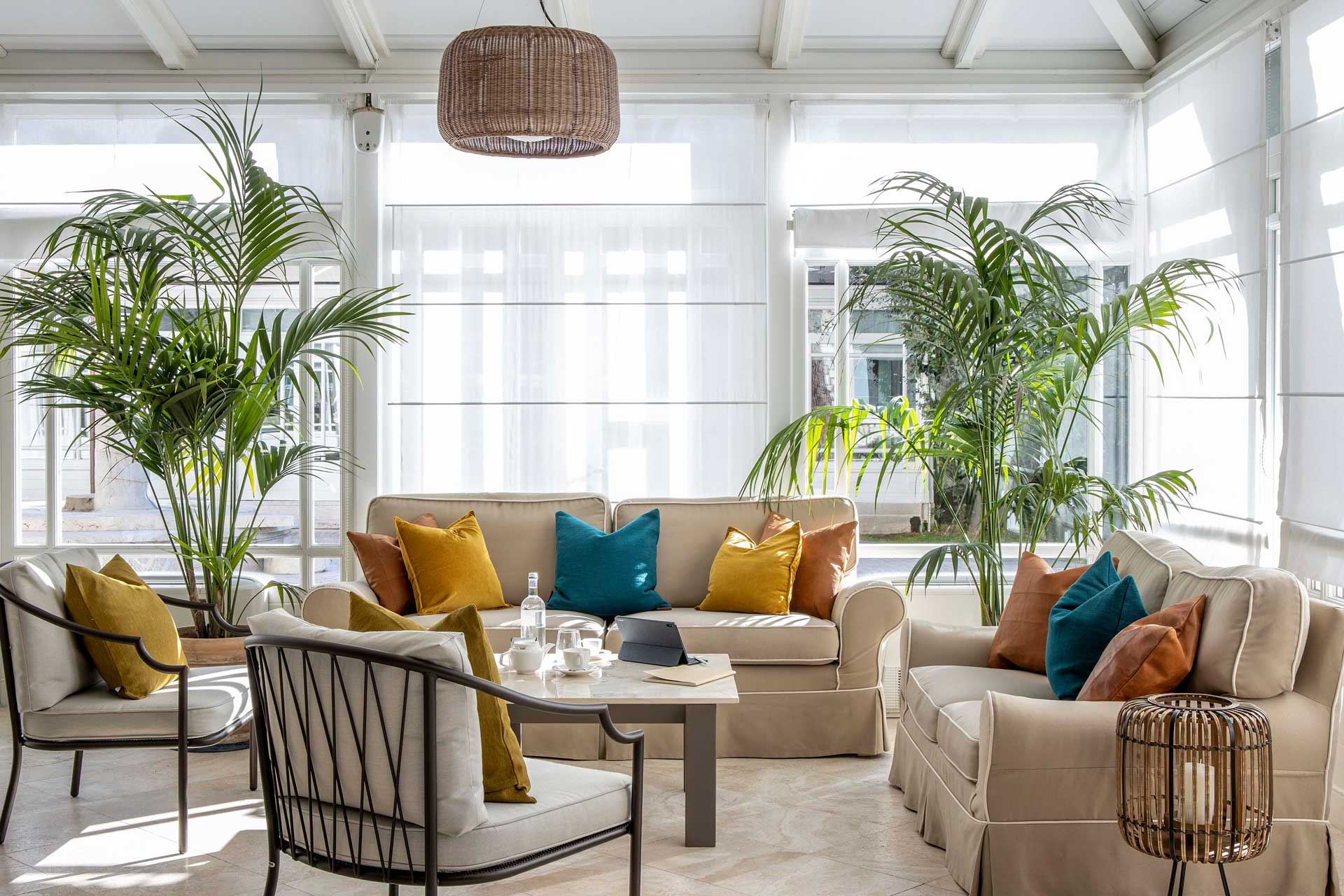
“Our objective was to enhance the arrival experience with the renovation of the entrance and porch, creating greater transparency between interior and exterior, and introduce new lighting such as suspended lanterns and two large installations that replicate the reflections of water on the ceiling,” THDP continues. “We also created a sense of vertical perspective through sculptures, including one that is designed to recall the waterfalls of the nearby mill and the oxidation of the water by overlaying several finished metal plates with different oxidation effects. Lastly, we wanted to devise a point of encounter between classic and contemporary by mixing existing furniture with new outdoor pieces by the likes of Emu and Talenti, along with two large lounge sofas that surround the lobby’s central fireplace.”
Moving through the ground floor – lit by Il Fanale’s bronze Plie lamps and rattan appliques by Bover – a new living wall provides a backdrop for culinary events, as well as shielding the entrance to the Buffet Room, a transitional space between the lobby and the hotel’s 1919 Restaurant. Elsewhere, the White Room features a series of square tables arranged around two large dining tables handcrafted in traditional Tuscan style, while flexible venue Sala Bianca – originally conceived as a secondary breakfast room – can now be used for private dinners and evening events thanks to a connecting patio.
Centred around an olive tree, the patio – or internal garden – is furnished with a blend of classic and contemporary pieces and continues the emphasis on the surrounding area, in particular the spa. The innate relationship is recalled through travertine flooring, artworks and terracotta pieces reminiscent of Tuscan workers from centuries gone by, together with warm colours and greenery that encapsulate what the Maremma region is renowned for.
Rounding out the lobby level renovations, the bar and library balance tradition and modernity by way of vases from ND Dolfi and turquoise tiles decorating bronze metal dividers by Ragnini. The bar counter features turquoise and petrol blue terracotta tiles too, handmade by Pecchioli Firenze in its Fondale colourway.
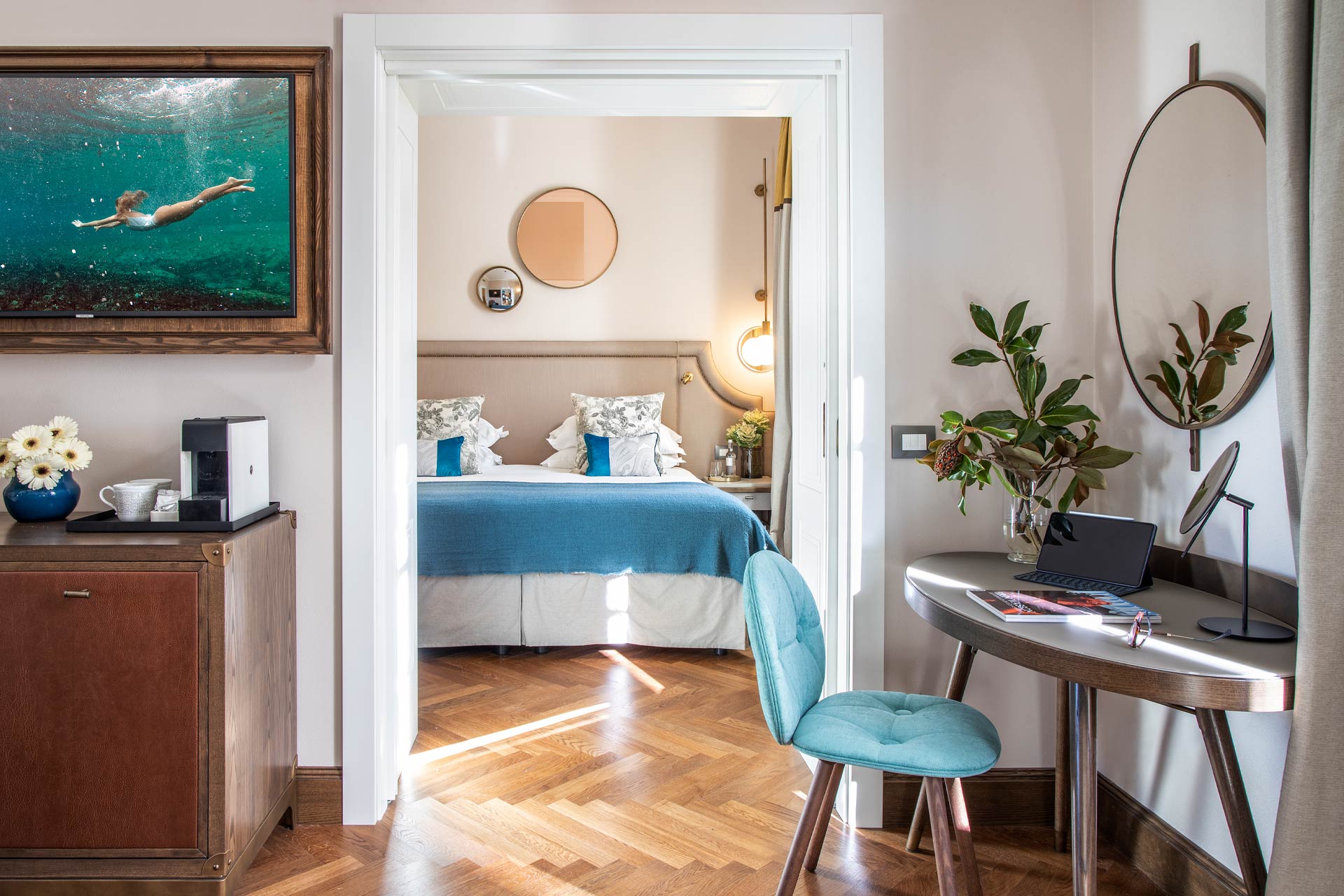
“Terme di Saturnia is famous for its wild horses, leather craft and ceramics, so our concept derived from this sense of belonging to the motherland, a deep attachment to nature and its cycles,” the practice explains. “The colour palette combines golden earthy tones and aquatic hues, which become richer and deeper the closer you get to the natural pool, while the teal and turquoise shades are a result of the water’s temperature, which changes to aqua green once it flows down to the waterfall.”
Upstairs, the property’s 132 guestrooms have been freshened up to mirror the look and feel of the public spaces. Custom Axminster rugs by Brintons give way to a colour palette inspired by the shades of the surrounding countryside, while furniture derives from Tuscany’s leather traditions, and soft furnishings by Citielle in turquoise and petroleum tones are evocative of the area’s thermal spring waters. Carpets have been replaced with Havwoods’ walnut oak parquet flooring and rugs by Loloey, while padded drapery and blackout Velcro curtains were added to guarantee a good night’s sleep, and bespoke details come in the form of transparent wardrobes designed by THDP and artworks from Rome-based studio Duealberi.
Bathrooms follow the Italian aesthetic and couple brass thermostatic showers by Zucchetti with restored travertine coatings and accessories by Monteleone, including rectangular and round cosmetic mirrors. In the suites, Marca Corona’s Motif Extra tiles reproduce the veins, shades and tactility of Calacatta marble in porcelain stone form.
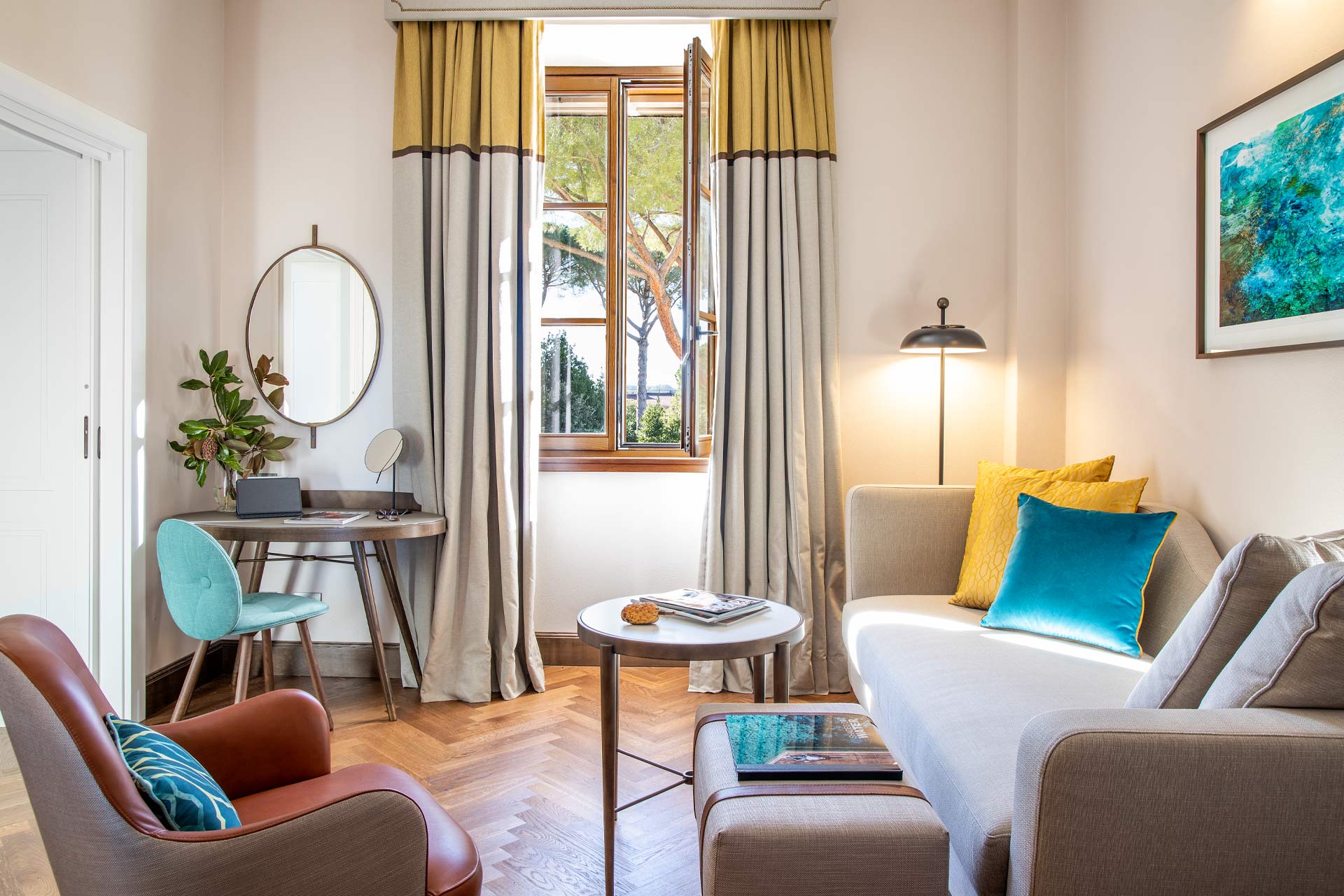
“Most of the companies involved were local, from Italian design districts and with traditions,” THDP confirms. “This idea extends to the contractors, who were vital to the project. Ragnini is a metal workshop based in the pretty Tuscan village of Pitigliano, which has continued the family tradition for seven generations, while we also worked with an expert in restoration from Florence, an FF&E company who are masters of carpentry, and a soft furnishings contractor with vast knowledge of the country’s fabrics industry.”
Though the end result was a success, THDP did face some hurdles along the way, including the preservation of wooden furnishings in the common areas and rooms to maintain continuity with the original scheme and make the refurbishment more sustainable. “The project was challenging as we made the conscious decision to breathe new life into a number of existing casegoods,” the studio recalls.
Up next for the firm are a DoubleTree by Hilton in Rome and a Delta by Marriott in Sicily, while it is also working on the restoration of a listed palace close to Venice’s Rialto Bridge, collaborating with SGA Studio to convert the heritage building into extended stay apartments for a European hotel operator. If Terme di Saturnia is anything to by, guests can expect another example of Italian design at its finest.
EXPRESS CHECK-OUT
Operator: Terme di Saturnia Natural Destination
Affiliation: The Leading Hotels of the World
Architecture and Interior Design: THDP
Project Manager: Patrizia Scafati
Graphic Design: Luca Galliano
Art Consultants: Agostinelli Arte, Duealberi
MIP/HVAC Consultant: L22
Landscaping: Paolo Pejrone
www.termedisaturnia.it
CREDITS
Words: Ben Thomas
Photography: © Giorgio Baroni
Magazine: Sleeper 95
Related Posts
23 March 2021
Feature: Volkshaus, Basel
22 March 2021
Feature: Zannier Hotels, Bãi San Hô
1 February 2021
